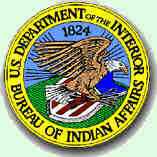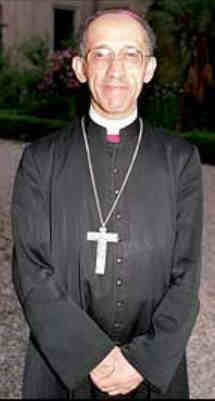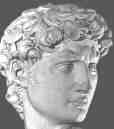1986 Japan auto making goes
to Europe ^top^
Continuing its enormous expansion
of the 1970s and early 80s, the Nissan Motor Company Ltd. opened
its Sunderland, England, plant, the first Japanese automobile
factory in Europe. Established in 1933 as the Jidosha Seizo
Company, Nissan remained a mid-size automobile manufacturer
until it entered the world market in the 1960s, when its sales
grew by leaps and bounds. Nissan, as well as several other Japanese
manufacturers, continued to grow through the next decade, propelled
by the increasing popularity of their fuel-efficient cars. Nissan
eventually opened plants in Australia, Peru, Mexico, the United
States, and Germany. |
1975 Boston begins court ordered busing of public schools
1974 Ford pardons Nixon.
^top^
US President Gerald R. Ford
preemptively pardons Richard M. Nixon for any crimes he may
have committed or participated in while in office. Ford would
later defend this action before the House Judiciary Committee,
explaining that he wanted to end the national divisions created
by the Watergate affair.
On 17 June 1972, seven men, including
two members of the Nixon reelection campaign, were arrested
for breaking into and illegally wiretapping the Democratic National
Committee headquarters in Washington DC's Watergate Hotel. Journalists
and the Senate Select Committee on Presidential Campaign Activities
discovered a higher-echelon conspiracy surrounding the incident,
and a political scandal of unprecedented magnitude erupted.
On 17 May 1973, the special Senate
committee began televised proceedings on the rapidly escalating
Watergate affair, and one week later, Harvard law professor
Archibald Cox was sworn in as special Watergate prosecutor.
During the Senate hearings, former White House legal counsel
John Dean testified that the Watergate break-in had been approved
by former Attorney General John Mitchell with the knowledge
of chief White House advisers John Ehrlichman and H. R. Haldeman,
and that the president had been aware of the cover-up.
Meanwhile, Cox and his staff
began to uncover widespread evidence of political espionage
by CREEP, the Nixon reelection committee, illegal wiretapping
of thousands of citizens by the administration, and corporate
contributions to the Republican Party in return for political
favors. In July, the existence of what were to be called the
Watergate tapes, recordings of White House conversations between
Nixon and his staff, was revealed during the Senate hearings.
Cox subpoenaed these tapes, and after three months of delay,
President Nixon agreed to send summaries of the recordings.
Cox rejected the summaries, and Nixon fired him.
His successor as special prosecutor,
Leon Jaworski, leveled indictments against several high-ranking
administration officials, including Mitchell and Dean, who were
duly convicted. Public confidence in the president rapidly waned,
and by July 30, 1974, the day that Nixon finally released the
Watergate tapes under coercion from the US Supreme Court, the
House Judiciary Committee had adopted three articles of impeachment
against President Nixon: obstruction of justice, abuse of presidential
powers, and hindrance of the impeachment process. On 09 August
1974, Richard M. Nixon became the first president in US history
to resign from office. |
1967 Uganda abolishes traditional tribal kingdoms, becomes a
republic
1960 Penguin Books in Britain is charged with obscenity for trying
to publish the D.H. Lawrence novel Lady Chatterly's Lover.
1958 Oman turns over Gwadur (on Balufchistan coast) to Pakistan
1957 Pope Pius XII encyclical On motion pictures, radio, TV
1955 The United States, Australia, France, Great Britain, New
Zealand, the Philippines, Pakistan, and Thailand sign the mutual defense
treaty that establishes the Southeast Asia Treaty Organization (SEATO).
1954 Vietnam:
1954 SEATO established ^top^
Having been directed by President
Dwight D. Eisenhower to put together an alliance to contain
any communist aggression in the free territories of Vietnam,
Laos, and Cambodia, or Southeast Asia in general, Secretary
of State John Foster Dulles forges an agreement establishing
a military alliance that becomes the Southeast Asia Treaty Organization
(SEATO). Signatories, including France, Great Britain, Australia,
New Zealand, the Philippines, Pakistan, Thailand, and the United
States, pledge themselves to “act to meet the common danger”
in the event of aggression against any signatory state. A separate
protocol to SEATO designated Laos, Cambodia, and “the free territory
under the jurisdiction of the State of Vietnam [South Vietnam]”
as also being areas subject to the provisions of the treaty.
The language of the treaty did
not go as far as the absolute mutual defense commitments and
force structure of the NATO alliance, instead providing only
for consultations in case of aggression against a signatory
or protocol state before any combined actions were initiated.
This lack of an agreement that would have compelled a combined
military response to aggression significantly weakened SEATO
as a military alliance. It was, however, used as legal basis
for US involvement in South Vietnam. SEATO expired on 30 June
1977 |
1953 Continental Trailways offers the first transcontinental express
bus service in the US The 5076 km ride from New York City to San Francisco
lasts eighty-eight hours and fifty minutes, of which only seventy-seven
minutes are non-riding time. The cost is $56.70. Nowadays, Greyhound
charges $131.
1951 Japan signs treaty of peace with 48 countries, in San Francisco.
1950 The US Congress passes the Defense Production Act to adjust
the economy to the Korean "police action". It includes wage
and price controls.
1945 American troops occupy
southern Korea. ^top^
US troops land in Korea to
begin their postwar occupation of the southern part of that
nation, almost exactly one month after Soviet troops had entered
northern Korea to begin their own occupation. Although the US
and Soviet occupations were supposed to be temporary, the division
of Korea quickly became permanent. Korea had been a Japanese
possession since the early 20th century. During World War II,
the allies — the United States, Soviet Union, China, and Great
Britain — made a somewhat hazy agreement that
Korea should become an independent
country following the war. As the war progressed, US officials
began to press the Soviets to enter the war against Japan. At
the Yalta Conference in February 1945, Soviet leader Joseph
Stalin pledged that his nation would declare war on Japan exactly
three months after Nazi Germany was defeated. A few months later,
at the Potsdam Conference in July and August 1945, it was agreed
that Soviet troops would occupy the northern portion of Korea,
while American forces would take a similar action in southern
Korea in order to secure the area and liberate it from Japanese
control. The occupations would be temporary, and Korea would
eventually decide its own political future, though no date was
set for the end of the US and Soviet occupations. On August
8, the Soviets declared war on Japan. On August 9, Soviet forces
invaded northern Korea. A few days later, Japan surrendered.
Keeping to their part of the bargain, US forces entered southern
Korea on 08 September 1945.
Over the next few years, the
situation in Korea steadily worsened. A civil war between communist
and nationalist forces in southern Korea resulted in thousands
of people killed and wounded. The Soviets steadfastly refused
to consider any plans for the reunification of Korea. The United
States reacted by setting up a government in South Korea, headed
by Syngman Rhee. The Soviets established a communist regime
in North Korea, under the leadership of Kim Il-Sung. In 1948,
the United States again offered to hold national elections,
but the Soviets refused the offer. Elections were held in South
Korea, and Rhee's government received a popular mandate. The
Soviets refused to recognize Rhee's government, though, and
insisted that Kim Il-Sung was the true leader of all Korea.
Having secured the establishment
of a communist government in North Korea, Soviet troops withdrew
in 1948; and US troops in South Korea followed suit in 1949.
In 1950, the North Koreans attempted to reunite the nation by
force and launched a massive military assault on South Korea.
The United States quickly came to the aid of South Korea, beginning
a three-year involvement in the bloody and frustrating Korean
War. Korea remains a divided nation today, and the North Korean
regime is one of the few remaining communist governments left
in the world. |
1944 Germany's V-2 offensive against England begins
1943 Italy's surrender made
public ^top^
Gen. Dwight Eisenhower publicly
announces the surrender of Italy to the Allies, secretly agreed
to on September 3, hours before the British Eighth Army began
the Allied invasion of the Italian peninsula, when the Italian
military had signed the surrender document in Sicily.
With Mussolini deposed from power
and the earlier collapse of the fascist government in July,
General Pietro Badoglio, the man who had assumed power in Mussolini's
stead by request of King Victor Emanuel, began negotiating with
General Eisenhower for weeks. Weeks later, Badoglio finally
approved a conditional surrender, allowing the Allies to land
in southern Italy and begin beating the Germans back up the
peninsula.
Operation Avalanche, the Allied
invasion of Italy, was given the go-ahead, and the next day
would see Allied troops land in Salerno.
Ever since Mussolini had begun
to falter, Hitler had been making plans to invade Italy to keep
the Allies from gaining a foothold that would situate them within
easy reach of the German-occupied Balkans. On 08 September Hitler
launches Operation Axis, the occupation of Italy. As German
troops enter Rome, General Badoglio and the royal family flee
Rome for southeastern Italy to set up a new antifascist government.
Italian troops began surrendering
to their former German allies. Where they resisted, as had happened
earlier in Greece, they were slaughtered (1646 Italian soldiers
were murdered by Germans on the Greek island of Cephalonia,
and the 5000 that finally surrendered were ultimately shot).
One of the goals of Operation
Axis was to keep Italian navy vessels out of the hands of the
Allies. When the Italian battleship Roma headed for an
Allied-controlled port in North Africa, it was sunk by German
bombers. The Roma was the first ship ever sunk by a radio-controlled
guided missile. More than 1500 crewmen drowned. The Germans
also scrambled to move Allied POWs to labor camps in Germany
in order to prevent their escape. In fact, many POWS did manage
to escape before the German invasion, and several hundred volunteered
to stay in Italy to fight alongside the Italian guerillas in
the north.
On September 13, Nazi commandos
rescue Fascist leader Benito Mussolini from his prison in the
Abruzzi Mountains. Ten days later, Mussolini proclaims the Italian
Social Republic, with its headquarters in northern Italy.
On October 13, the Italian government,
refusing to recognize Mussolini's puppet state, would declare
war against Nazi Germany. Since the beginning of the war, the
Italian Resistance visibly opposed Italy's Fascist regime and
its cooperation with the Nazis, organizing mountain guerilla
units, workers' strikes, and industrial sabotages. The Resistance
gained momentum after a government coup toppled Mussolini, and
during the Allied liberation, soldiers of the Resistance provided
invaluable aid to Allied troops. |
1943 US forces seize more
of New Guinea ^top^
Gen. Douglas MacArthur's 503rd
Parachute Regiment land and occupy Nazdab, just east of Lae,
a port city in northeastern Papua New Guinea, situating them
perfectly for future operations on the islands. New Guinea had
been occupied by the Japanese since March 1942. Raids by Allied
forces early on were met with tremendous ferocity, and they
were often beaten back by the Japanese occupiers.
Much of the Allied response was
led by forces from Australia, as they were most threatened by
the presence of the Japanese in that sphere. The tide began
to turn in December 1942, as the Australians recaptured Buna—but
despite numerical superiority, the Japanese continued to hang
on, fighting to keep every square mile they had captured. Many
Japanese committed suicide, swimming out to sea, rather than
be taken prisoner.
In January 1943, the Americans
joined the Aussies in assaults on Sanananda, which resulted
in huge losses for the Japanese—7000 killed—and the first land
defeat of the war. As Japanese reinforcements raced for the
next Allied targets, Lae and Salamauam, in March, 137 American
bombers destroyed the Japanese transport vessels, drowning 3500
Japanese, as well as their much-needed fuel and spare parts.
On 08 September almost 2000 American and Australian Airborne
Division parachutists landed and seized Nazdab, which held a
valuable airfield. The Allies quickly established a functioning
airstrip and prepared to take the port city of Lae, one more
step in MacArthur's strategy to recapture New Guinea and the
Solomons—and eventually go back for the Philippines. |
1941 Siege of Leningrad begins.
^top^
Nazi Germany's siege of Leningrad
would last 900 days. Some citizens were forced to subsist on
bread made from sawdust while others worked through the winter
in makeshift military factories without heat. Although many
perished from starvation, bombings, and the cold, the city's
determined resistance held the German troops at bay and helped
turn the tide of World War II. When the siege finally ended
in January of 1944, Leningrad's population had been reduced
from 2'500'000 to 600'000.
During World War II, German forces
begin their siege of Leningrad, a major industrial center and
the USSR's second-largest city. The German armies were later
joined by Finnish forces that advanced against Leningrad down
the Karelian Isthmus. The siege of Leningrad, also known as
the 900-Day Siege though it lasted a grueling 872 days, and
resulted in the deaths of some one million of the city's civilians
and Red Army defenders.
Leningrad, formerly St. Petersburg,
capital of the Russian Empire, was one of the initial targets
of the German invasion of June 1941. As German armies raced
across the western Soviet Union, three-quarters of Leningrad's
industrial plants and hundreds of thousands of its inhabitants
were evacuated to the east. More than two million residents
remained, however, and the evacuated were replaced by refugees
who fled to Leningrad ahead of the German advance. All able-bodied
persons in the city — men, women, and children — were enlisted
to build antitank fortifications along Leningrad's edge. By
the end of July, German forces had cut the Moscow-Leningrad
railway and were penetrating the outer belt of the fortifications
around Leningrad. On 08 September German forces besieged the
city, but they were held at bay by Leningrad's fortifications
and its 200'000 Red Army defenders. That day, a German air bombardment
set fire to warehouses containing a large part of Leningrad's
scant food supply.
Aiming to tighten the noose around
Leningrad, the Germans launched an offensive to the east in
October and cut off the last highways and rail lines south of
the city. Meanwhile, Finnish forces advanced down the Karelian
Isthmus (which had been seized from Finland by the Soviets during
the Russo-Finnish War of 1939 to 1940) and besieged Leningrad
from the north. By early November, the city was almost completely
encircled, and only across Lake Ladoga was a supply lifeline
possible.
German artillery and air bombardments
came several times a day during the first months of the siege.
The daily ration for civilians was reduced to 125 grams of bread,
no more than a thick slice. Starvation set in by December, followed
by the coldest winter in decades, with temperatures falling
to -40 degrees Fahrenheit. People worked through the winter
in makeshift armament factories without roofs, building the
weapons that kept the Germans just short of victory.
Residents burned books and furniture
to stay warm and searched for food to supplement their scarce
rations. Animals from the city zoo were consumed early in the
siege, followed before long by household pets. Wallpaper paste
made from potatoes was scraped off the wall, and leather was
boiled to produce an edible jelly. Grass and weeds were cooked,
and scientists worked to extract vitamins from pine needles
and tobacco dust. Hundreds, perhaps thousands, resorted to cannibalizing
the dead, and in a few cases people were murdered for their
flesh. The Leningrad police struggled to keep order and formed
a special division to combat cannibalism.
Across frozen Lake Ladoga, trucks
made it to Leningrad with supplies, but not enough. Thousands
of residents, mostly children and the elderly, were evacuated
across the lake, but many more remained in the city and succumbed
to starvation, the bitter cold, and the relentless German air
attacks. In 1942 alone, the siege claimed some 600'000 lives.
In the summer, barges and other ships braved German air attack
to cross Lake Ladoga to Leningrad with supplies.
In January 1943, Red Army soldiers
broke through the German line, rupturing the blockade and creating
a more efficient supply route along the shores of Lake Ladoga.
For the rest of the winter and then during the next, the "road
of life" across the frozen Lake Ladoga kept Leningrad alive.
Eventually, an oil pipeline and electric cables were laid on
the lake bed. In the summer of 1943, vegetables planted on any
open ground in the city supplemented rations.
In early 1944, Soviet forces
approached Leningrad, forcing German forces to retreat southward
from the city on January 27. The siege was over. A giant Soviet
offensive to sweep the USSR clean of its invaders began in May.
The 872-day siege of Leningrad cost an estimated one million
Soviet lives, perhaps hundreds of thousands more. The Soviet
government awarded the Order of Lenin to the people of Leningrad
in 1945, paying tribute to their endurance during the grueling
siege. The city did not regain its prewar population of three
million until the 1960s. |
1939 FDR declares "limited national emergency" due to war in
Europe
1935 Huey P. Long is shot.
^top^
He is shot at point-blank range,
in the corridor outside the main hall of the state capitol in
Baton Rouge, Louisiana, by Dr. Carl Austin Weiss, Jr, who is
then killed on the spot by Long's bodyguards. Mortally wounded,
Long would die two days later. Apparently Dr. Weiss was avenging
his father-in-law, who had had lost his job as a Louisiana judge,
because he was not part of the Long political machine and Long
publicly slandered him.
Huey Long, nicknamed the "Kingfish"
after a character on the popular Amos 'n' Andy radio show, and
called a demagogue by critics, was a larger-than-life populist
leader who boasted that he bought legislators "like sacks of
potatoes, shuffled them like a deck of cards."
In 1928 Long had become the youngest
governor of Louisiana at age 34. His brash style alienated many
people, including the heads of the biggest corporation in the
state, Standard Oil. Long preached the redistribution of wealth,
which he believed could be done by heavily taxing the rich.
One of his early propositions, which met with much opposition,
was an "occupational" tax on oil refineries. Later, Long would
develop these theories into the Share Our Wealth society, which
promised a $2500 minimum income per family.
Long also abolished the state's
poll tax on voting and gained free textbooks for every student.
His motto was "Every Man a King." His populism led to an impeachment
attempt, but he successfully defeated the charges. In 1930,
he won the election for US senator but declined to serve until
the successor he picked for governor was elected in 1932.
Soon after vigorously campaigning
for Franklin Roosevelt in 1932, Long, with his own designs on
the office, began loudly denouncing the new president. In response,
many of his allies in the Louisiana legislature turned against
him and would no longer vote for his candidates. In an effort
to regain power in the state, Long managed to pass a series
of laws giving him control over the appointment of every public
position in the state, including every policeman and schoolteacher. |
1930 NYC public schools begin teaching Hebrew
1928 Pius XI issues the encyclical Rerum
Orientalium, promoting study of the history, doctrine and liturgy
of Eastern Orthodoxy. He recommends that priests apply themselves to
special studies at the Oriental Institute in Rome, founded in 1917 by
Benedict XV.
1925 Germany is admitted into the League of Nations.
1920 US Air Mail service begins (NYC to SF)
1915 Germany begins a new offensive in Argonne on the Western
Front.
1892 1st appearance of "The Pledge of Allegiance" (Youth's Companion)
1864 George McClellan accepts nomination as Democratic candidate
for President
1863 Confederate Lieutenant Dick Dowling with 47 Texas volunteers
thwarts a Union naval landing at Sabine Pass (Fort Griffin), northeast
of Galveston, Texas.
1858 Lincoln makes a speech about when you can fool people
1845 Oxford Movement leader, John Henry Newman, 44, resigns from
the Church of England — convinced that it had severed itself from its
ancient episcopal moorings and true apostolic succession — and became
a Roman Catholic.
1845 A French column surrenders at Sidi Brahim in the Algerian
War
1810 The Pacific Fur Company's
first ship leaves for Oregon ^top^
The sailing ship Tonquin
leaves New York with 33 employees of Jacob Astor's new Pacific
Fur Company on board. Six months later, the Tonquin would arrive
at the mouth of the Columbia River, where Astor's men establish
the town of Astoria and begin trading for furs with the Indians.
Thus began the first major American involvement in the lucrative
far western fur trade.
During the colonial era, the
powerful British Hudson's Bay Company, along with several French
companies based in Montreal, had dominated the North American
fur trade. But slowly and timidly, Americans began to establish
their own fur companies in the early nineteenth century, particularly
after Thomas Jefferson doubled the size of the United States
with the Louisiana Purchase of 1803, and the Lewis and Clark
Expedition (1804-6) reported that the vast new American territory
was rich in beaver. Based on their explorations, Lewis and Clark
suggested that furs could be carried over the Rockies by horse
to the Columbia River and from there shipped to the Orient more
cheaply than the British or French could move furs eastward
to Europe.
Recognizing a rare business opportunity,
the German-born immigrant John Jacob Astor organized his Pacific
Fur Company and dispatched the Tonquin for the Oregon coast
to try and make Lewis and Clark's proposal a reality. But while
the small trading post of Astoria initially quickly proved a
success, the American control of the Pacific Northwest fur trade
did not last. By late 1813, Astor's partners, who were mostly
Canadian, decided to sell out to the British North West Company,
and during the War of 1812 the British Navy took control of
Astoria.
With the British temporarily
dominating the region, Astor decided to dissolve the Pacific
Fur Company and focus his efforts on his American Fur Company,
an enterprise that eventually came to control three-quarters
of the American fur trade. Despite the loss of his first Pacific
coast outpost at Astoria, Astor's profits from his American
Fur Company, the War of 1812, and large investments in real
estate, eventually made him the wealthiest American of his day
and established one of the great enduring family fortunes. |
1796 Battle of Bassano — French beat Austrians
1760 Montréal surrendered by the French to the British.
1755 Battle of Lake George: British forces under William Johnson
defeat the French and the Indians..
1664 New Amsterdam surrenders
to the British. ^top^
Dutch Governor Peter Stuyvesant
surrenders New Amsterdam (about 120 houses and 1000 inhabitants),
the capital of New Netherland, to an English naval squadron
under Colonel Richard Nicolls with 300 soldiers. Stuyvesant
had hoped to resist the English, but he was an unpopular ruler,
and his Dutch subjects refused to rally around him. Five years
later, New Amsterdam's name was changed to New York, in honor
of the Duke of York, who organized the mission.
The colony of New Netherland
was established by the Dutch West India Company in 1624 and
grew to encompass all of present-day New York City and parts
of Long Island, Connecticut, and New Jersey. A successful Dutch
settlement in the colony grew up on the southern tip of Manhattan
Island and was christened New Amsterdam.
To legitimatize Dutch claims
to New Amsterdam, Dutch governor Peter Minuit formally purchased
Manhattan from the local tribe from which it derives it name
in 1626. According to legend, the Manhattans — Indians
of Algonquian linguistic stock — agreed to give up the
island in exchange for trinkets valued at only $24. However,
as they were ignorant of European customs of property and contracts,
it was not long before the Manhattans came into armed conflict
with the expanding Dutch settlement at New Amsterdam. Beginning
in 1641, a protracted war was fought between the colonists and
the Manhattans, which resulted in the death of more than 1000
Indians and settlers.
In 1664, New Amsterdam passed
to English control, and English and Dutch settlers lived together
peacefully. In 1673, there was a short interruption of English
rule when the Netherlands temporary regained the settlement.
In 1674, New York was returned to the English, and in 1686 it
became the first city in the colonies to receive a royal charter.
After the US War of Independence, it became the first capital
of the United States. |
1636 Harvard College (later University) is founded by the Massachusetts
Puritans at New Towne. It was the first institution of higher learning
established in North America, and was originally founded to train future
ministers.
1628 John Endecott arrives with colonists at Salem, Massachusetts,
where he will become the governor.
1565 Turkish siege of Malta broken by Maltese and Knights of
Saint John.
1529 Ottoman Sultan Suleiman re-enters Buda and establishes John
Zapolyai as the puppet king of Hungary.
1522 Spanish navigator Juan de Elcano returns to Spain, completes
the first circumnavigation of the globe, expedition begins under Ferdinand
Magellan.
1380 Russians defeat Tatars at Kulikovo, beginning decline of
Tatars.
0070 Following a six-month siege, Jerusalem surrenders to the
60'000 soldiers of Titus' Roman army. Over a million Jewish citizens perished
in the siege and, following the city's capture, another 97'000 are sold
into slavery.
|
 2000
Bureau of Indian Affairs apologizes
2000
Bureau of Indian Affairs apologizes  Deaths
Deaths

